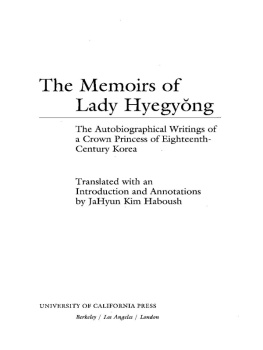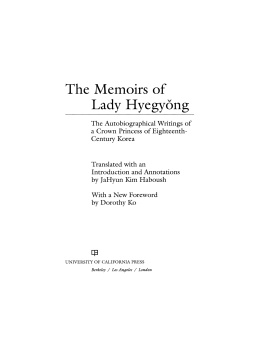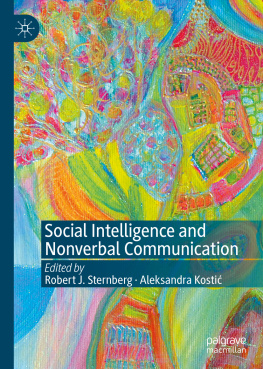THE MEMOIRS OF MARIA STELLA
(LADY NEWBOROUGH)
Maria Stella, Lady Newborough, as a Gypsy.
From a picture at Glynllifon
THE MEMOIRS OF
MARIA STELLA
(LADY NEWBOROUGH)
BY
HERSELF
Translated from the original French by M. Harriet M. Capes
and with an introduction by B. DAgen
LONDON
EVELEIGH NASH
1914
LIST OF ILLUSTRATIONS
| To face page |
| * Maria Stella, Lady Newborough, as a Gypsy |
| (From a picture at Glynllifon) |
| * Lord Newborough |
| (From a picture at Glynllifon) |
| * Glynllifon |
| (From a drawing by the late Sir John Ardagh) |
| * Maria Stella, Lady Newborough |
| (From a bust at Glynllifon) |
| The Duke of Orleans (Philippe-galit) |
| Mme. de Genlis |
| (Photo, Braun Clement et Cie) |
| Maria Stella, Lady Newborough, Baronne de Sternberg |
| The Duchess of Orleans (Louise Marie Adlade de Bourbon-Penthivre) Wife of Philippe-galit |
| Louis-Philippe, King of France |
* The thanks of the publisher are due to the Hon. F. G. Wynn for permission to reproduce these pictures, and to Sir Ralph Payne-Gallwey, Bart. (author of The Mystery of Maria Stella, Lady Newborough: Edward Arnold), for the use of his copyright photographs of the same.
THE ORLEANS-CHIAPPINI CASE
Newborough v. Joinville
Whereas the plaintiff has claimed that the rectification of her certificate of baptism should be properly carried out, etc. That Lorenzo Chiappini, being near his death, wrote a letter to the plaintiff, in which, to ease his conscience, he declared that she was not his daughter.
That the words of a dying man must bear the impress of truth.
That, according to the evidence of the witnesses Bandini, it is absolutely proved that Count Louis Joinville exchanged his daughter for a boy of Lorenzo Chiappinis, and that the Demoiselle de Joinville was baptized under the name of Maria Stella, falsely described as the daughter of Chiappini and his wife.
That the Lady Maria Stella therefore justly claims the rectification of her birth-certificate.
Moreover, that the evidence of the aforesaid witnesses is supported by public notoriety and the difficulties the Comte de Joinville experienced.
Finally, that the legitimacy of the claim is proved by the careful education given to the plaintiffan education unsuitable to the daughter of a jailer, as well as by the improvement in the fortunes of Chiappini which ensued.
For these reasons, which will be established both in fact and law by the proofs put in, and for all others resulting from the proceedings, it is held that the plaintiffs request should be granted, etc.
THE ORLEANS-CHIAPPINI CASE
Joinville v. Newborough
Whereas the plaintiff, in both her birth and baptismal certificates, is described as the daughter of Lorenzo Chiappini, who brought her up as such, and that so she acknowledged herself for nearly fifty years, etc.
That this plainly establishes the fact of her birth and consequent rights, etc.
That the proofs brought forward by the plaintiff amount to no more than the depositions of a few witnesses, whereas the proof should be in writing, etc.
That failing the necessary proofs of affiliation and paternity, the law holds good that given in the birth-certificate, etc.
That, even if the proofs given in evidence were alone sufficient, the witnesses produced by the plaintiff do not plainly report the fact of the substitution, etc.
Moreover, doubt is not dispelled by Chiappinis declaration, because it is not expressed in authentic or documentary terms, etc.
Finally, that to claim to be the daughter of a certain person not that named in the certificate of birth or shown as in possession, it is necessary to prove that such person has really existed, etc.
For these reasons, it must be held that the claims of the plaintiff be refused, and that she be condemned in all the costs of the trial, etc.
THE MEMOIRS OF MARIA STELLA
INTRODUCTION
In Le Matin of March 17, 1913, appeared the following article, with which we will begin the account of some abridged documents.
While examining the Archives of the Office of Foreign Affairs, a young historian, M. Maugras, has unearthed a very curious love-story, deposited by the guilty couples own hands, relating to the Duke of Orleans, later Philippe-Egalit, and the governess of his children, the virtuous and pedagogic Mme. de Genlis.
In consequence of this liaison, Mme. de Genlis was made Captain of the Guards; and the governess of the future Louis-Philippe and Mme. Adlade gave birth to two charming little daughters, who were brought up in England and known as Pamela and Miss Campton.
Mme. de Genlis was also the mother of a legitimate daughter, who later on married M. de Valence. Mme. de Valence was to have for her son-in-law the Marchal Grard, lineal ancestor of the brilliant poetess, Rosemonde Grard.
On the other hand, Miss Campton married a Gascon, M. Collard, and was grandmother to Marie Cappelle (Mme. Lafarge).
Thus, by legitimate descent, Mme. de Genlis is the ancestress of Rosemonde Rostand, and, illegitimate, of Mme. Lafarge.
The latter wrote six thousand letters, not to speak of her Mmoires and her Heures de Prison.
As for the author of the play, Un Bon Petit Diable, he proposed nothing less than to tune his pipe to all history and legend, in spite of what his own descent might imply.
The heritage of the Governess of the Children of France has not fallen to the distaff side.
The next day, March 18, the same journal published this other article, which impartiality obliges us to reproduce here
Through the assiduous researches of a pious inquirer into the things of the past, the Mercure de France has just published a touching series of letters, written by Mme. Lafarge from her prison at Montpellier, to her Director, lAbb Brunet, residing in the Bishops Palace at Limoges. This is a twofold revelation, in that it testifies both to the delicate skill of the writer and the innocence of the accused, but the correspondence is unfortunately incomplete.
Some of these letters were given to M. Boyer dAgen by M. Albris Body, Keeper of the Records at Spa in Belgium; others were discovered amongst the posthumous papers of Zaleski, the classic poet of the Ukraine; those that remain are doubtless buried in the dusty catacombs of some library. It could be wished that one of those lucky chances which are the providence of the erudite might allow of their disinterment.
To complete this and prove something definite, these two quotations ought to be accompanied by a third which I take from one of the letters given by Le Matin, in which the celebrated Mme. Lafarge ventures to disclose the secret reason for her notorious misfortunes by at last revealing the mystery of her illegitimate origin, which, through the house of Orleans, of which her grandmother was issue, made her a near relation of Louis-Philippe, who during his reign, moved by fear, permitted the trial of this cousin by blood, whom he dared not have acquitted after ten years of imprisonment.
The Queen charged the Marchale Grard, writes Marie Cappelle in this painful confession, to tell me that she would make it her business to interest herself in me. She went herself to speak to the Ministers. It was last spring (1848), and the men condemned for the riots at Basanceney had just been executed. The Ministers said that there would be an outcry, that it would get mixed up with politics;








